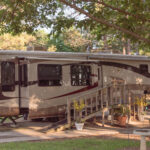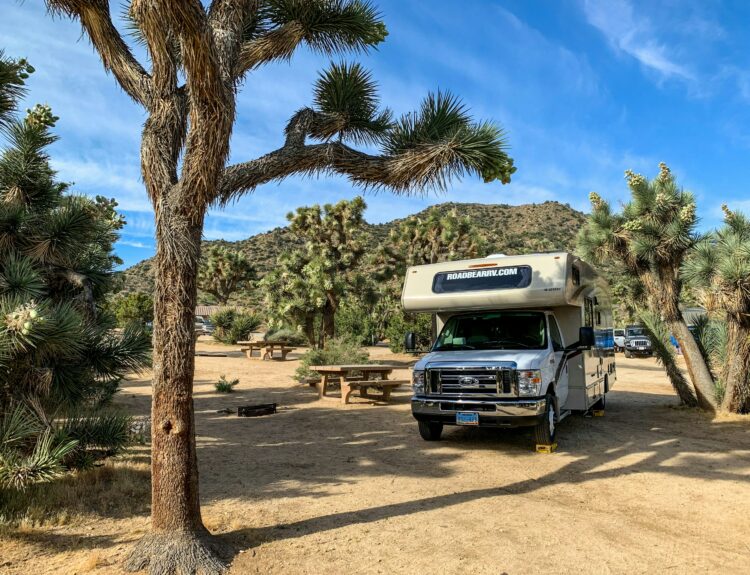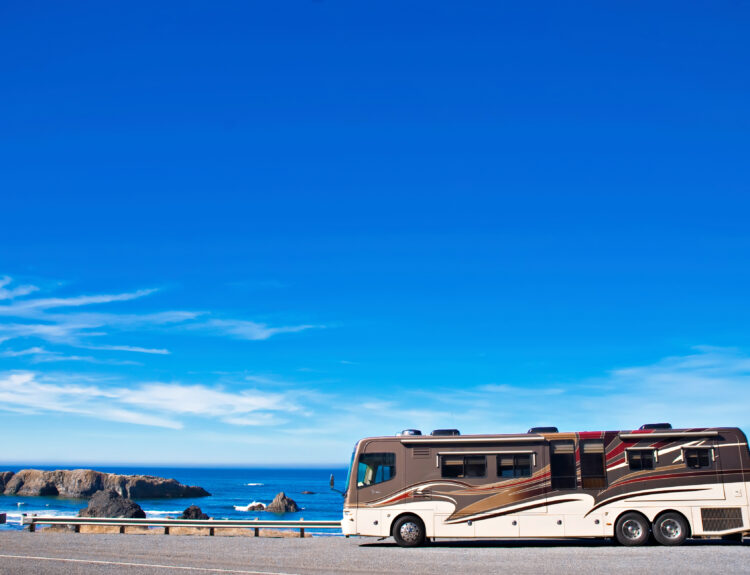In the rapidly evolving RV park industry, long-term camping is emerging as a significant trend. This trend offers numerous benefits to both campers and park owners, making it a strategic focus for business growth.
For RV parks located near national parks, this presents an even greater opportunity. The natural beauty and recreational offerings of national parks draw a constant stream of visitors, many of whom prefer extended stays to fully immerse themselves in the experience.
National parks serve as prime locations for attracting long-term campers due to their inherent appeal. They offer a unique blend of stunning landscapes, diverse wildlife, and a plethora of outdoor activities that make them ideal destinations for long-term vacations.
For RV park owners, understanding and capitalizing on this demand can significantly enhance their business profitability, providing a steady income stream and increasing occupancy rates.
Understanding Long-Term Camping
Demographics of Long-Term Campers
Long-term camping appeals to a variety of demographics.
- Retirees: they often seek a slower pace of life and the chance to explore new areas at their leisure.
- Remote workers: taking advantage of the rise in digital nomadism, remote workers enjoy the flexibility to work from scenic and inspiring environments.
- Families: especially during school holidays, they opt for extended vacations to create lasting memories together in natural settings.
Benefits for RV Park Owners
Long-term campers provide several benefits for RV park owners. These campers offer a steady stream of income, reducing the need for constant marketing and frequent guest turnover. Additionally, longer booking periods lead to more predictable occupancy rates, enhancing financial stability.
The presence of long-term campers also fosters a sense of community within the park, often resulting in repeat business and positive word-of-mouth referrals.
Current Trends in Long-Term Camping
Several trends are driving the increase in long-term camping.
The rise of remote work has made it possible for more people to work from anywhere, making extended stays feasible. The growing retirement population means more retirees are hitting the road in their RVs, seeking adventure and new experiences.
Moreover, there is a general trend towards longer vacations, driven by a desire for deeper, more immersive experiences and a better work-life balance.
The Appeal of National Parks for Long-Term Campers
Overview of National Parks’ Popularity
National parks are incredibly popular, drawing millions of visitors each year. Their appeal lies in the stunning landscapes they offer, ranging from majestic mountains and dense forests to arid deserts and dramatic coastlines.
These parks provide a wide array of outdoor activities, including hiking, biking, fishing, and bird-watching, catering to various interests and activity levels. The accessibility of many national parks by road makes them particularly attractive to RV campers looking for convenient yet adventurous travel destinations.
Reasons National Parks Attract Long-Term Campers
National parks attract long-term campers for several compelling reasons.
- They offer an unparalleled opportunity to immerse oneself in nature. Spending extended periods in these environments allows campers to deeply connect with the natural world, experiencing the changing landscapes and wildlife across seasons.
- The health benefits of spending time outdoors—such as increased physical activity and reduced stress levels—are significant.
- National parks also provide educational opportunities through ranger-led programs, visitor centers, and interpretive trails, offering insights into the natural and cultural history of the area.
Demographics of Campers Preferring Long-Term Stays
The demographics of campers who prefer long-term stays near national parks are diverse.
- Retirees often seek peaceful, extended vacations to fully explore park areas at their own pace.
- Remote workers, attracted by the serene and inspiring environments, find these locations ideal for balancing work and leisure.
- Families take advantage of school breaks and holidays for extended stays, allowing children to experience and learn from nature.
This mix of demographics enhances the sense of community within RV parks located near national parks, as campers of all ages and backgrounds come together with a shared love for the outdoors.
Key National Parks Driving Long-Term Camping Demand

Yellowstone National Park
A prime example, with its geysers, hot springs, and abundant wildlife drawing long-term campers. Established in 1872, Yellowstone spans over 2.2 million acres across Wyoming, Montana, and Idaho.
Campers are attracted to its geothermal features like Old Faithful, scenic vistas, and diverse ecosystems. Long-term campers can spend weeks exploring its trails, fishing in its rivers, and observing wildlife in their natural habitat.
Grand Canyon National Park
Offers dramatic vistas and a range of activities, appealing to those seeking both adventure and relaxation. Located in Arizona, the Grand Canyon is one of the world’s most iconic natural wonders.
Long-term campers can take advantage of the park’s extensive trail system, including the famous Rim-to-Rim hike, and enjoy activities like rafting on the Colorado River and stargazing in the park’s designated dark sky areas.
Great Smoky Mountains National Park
Provides lush landscapes and historical sites, attracting nature enthusiasts and history buffs alike. Straddling the border between North Carolina and Tennessee, this park is renowned for its biodiversity and mist-covered mountains.
Long-term campers can explore the park’s numerous trails, visit historic Appalachian homesteads, and participate in ranger-led programs that delve into the area’s rich cultural heritage.
Yosemite National Park
It is renowned for its stunning granite cliffs and waterfalls, making it a favorite for extended stays. Located in California, Yosemite features iconic landmarks like El Capitan, Half Dome, and Yosemite Falls. Long-term campers can engage in rock climbing, hiking, and photography, taking full advantage of the park’s awe-inspiring scenery and diverse recreational opportunities.
Big Bend National Park
Big Bend National Park, located in Texas, offers long-term campers breathtaking desert landscapes, diverse wildlife, and over 150 miles of hiking trails. Its remote location ensures tranquility and an opportunity for stargazing in one of the darkest night skies in the U.S. The park’s hot springs and Rio Grande access provide unique recreational activities for extended stays.
These parks are just a glimpse into the wealth of natural beauty and adventure offered by national parks across the country. Many more parks, each with unique attractions and opportunities for long-term camping, await exploration.
By positioning your RV park near these magnificent destinations, you can tap into a vast and growing market of eager long-term campers.
Advantages of Establishing RV Parks Near National Parks
Increased Foot Traffic and Bookings
Locating an RV park near a national park can significantly increase foot traffic and bookings. The proximity to popular attractions ensures a steady influx of visitors, especially during peak seasons. Campers are drawn to the convenience of staying close to national parks, allowing them to maximize their time exploring and enjoying outdoor activities.
Higher Occupancy Rates and Revenue
Higher occupancy rates and revenue are significant advantages of establishing an RV park near a national park. National parks attract a large number of tourists annually, many of whom prefer the convenience of staying nearby, leading to more extended bookings. This consistent demand can result in higher occupancy rates throughout the year, providing a stable and predictable income for RV park owners.
Diverse Customer Base
A diverse customer base is another benefit of operating an RV park near a national park. National parks draw a variety of visitors, including families, solo travelers, and groups. This diversity can lead to higher occupancy rates and more robust business growth. Catering to different demographics can also create opportunities for tailored marketing strategies and specialized amenities.
Enhanced Marketing Opportunities
Enhanced marketing opportunities arise from the park’s reputation. Being located near a well-known national park can enhance your RV park’s visibility and appeal, making marketing efforts more effective and less costly.
Collaborations with national parks, participation in joint promotions, and leveraging the park’s established audience can amplify your marketing reach and attract more visitors.
Developing a Long-Term Camping Strategy for Your RV Park
Identifying the Right Location Near National Parks
Identifying the right location near national parks is crucial. Consider factors such as accessibility, proximity to popular trails and attractions, and the availability of necessary infrastructure. Choosing a location that is easily accessible by road and close to park entrances can significantly enhance the appeal of your RV park to long-term campers.
Understanding Zoning and Environmental Regulations
Understanding zoning and environmental regulations is essential. Each national park area may have specific regulations regarding land use and environmental protection. Ensure compliance to avoid legal issues. Conduct thorough research and engage with local authorities to understand the requirements and obtain necessary permits.
Planning for Extended Amenities and Services
Planning for extended amenities and services is vital to attract long-term campers. These might include reliable Wi-Fi, laundry facilities, and recreational activities. Offering these amenities can make your park more appealing for extended stays.
Long-term campers value convenience and comfort, so providing facilities that meet their needs can enhance their overall experience and encourage longer stays.
Marketing Your RV Park to Long-Term Campers
- Utilizing digital marketing strategies such as SEO, social media, and email marketing can effectively reach potential campers. Highlight the benefits of long-term stays and proximity to the national park in your campaigns. Use targeted keywords, engaging content, and eye-catching visuals to attract your audience.
- Partnering with national parks for cross-promotion can be mutually beneficial. Collaborate on events, offer joint packages, or participate in the park’s promotional activities to increase visibility. These partnerships can also provide valuable networking opportunities and enhance your park’s credibility.
- Creating special offers and loyalty programs can encourage repeat visits. Discounts for long-term stays, referral bonuses, and seasonal promotions can make your park more attractive to long-term campers. Building a loyal customer base through these initiatives can lead to increased bookings and positive word-of-mouth referrals.
- Your RV park website is crucial for attracting long-term campers. It serves as a virtual brochure, showcasing your park’s amenities and proximity to national parks. Ensure it’s user-friendly, optimized for search engines, and features an easy booking system. A well-designed website enhances visibility, credibility, and bookings.
To help RV parks create high-quality websites, Roverpass created a solution called Premium Website Builder. Our skilled team of writers, designers, and developers possesses the expertise needed to fully optimize RV park websites. By doing so, we aim to increase traffic, generate more leads, and maximize revenue. Additionally, the premium website can be directly integrated with our campground reservation software, effectively serving as your 24/7 sales team.
Enhancing Camper Experience for Long-Term Stays
- Providing top-notch customer service is crucial for retaining long-term campers. Train your staff to be friendly, knowledgeable, and responsive to camper needs. Personalized service can significantly enhance the camper experience and encourage longer stays.
- Offering community-building activities such as group hikes, BBQs, or game nights can enhance the camper experience, fostering a sense of community. These activities can create memorable experiences and encourage campers to stay longer and return in the future.
- Maintaining high standards of cleanliness and safety is essential. Regular maintenance, clean facilities, and a safe environment will keep campers satisfied and encourage longer stays. Implementing rigorous cleaning protocols and ensuring all facilities are in good working order can build trust and loyalty among your guests.
Challenges of Operating an RV Park Near National Parks
Addressing Environmental Impact and Sustainability
Addressing environmental impact and sustainability is a primary concern. Implement eco-friendly practices to minimize your park’s footprint and preserve the natural beauty that attracts campers. This can include using renewable energy sources, implementing water conservation measures, and promoting recycling programs.
Managing Peak Season Crowding
Managing peak season crowding can be challenging. Develop strategies to handle the influx of visitors during high seasons, ensuring a pleasant experience for all campers. This can involve implementing reservation systems, timed entry, and additional staffing during peak periods.
Dealing with Regulatory Challenges
Dealing with regulatory challenges is part of operating near national parks. Stay informed about local, state, and federal regulations to ensure compliance and avoid penalties. Engaging with local authorities and participating in community meetings can also help you stay updated on any changes that may impact your business.
Solutions to Common Challenges
- Sustainable practices and eco-friendly initiatives can include recycling programs, water conservation efforts, and the use of renewable energy sources. These practices not only reduce your environmental impact but also appeal to environmentally conscious campers.
- Effective crowd management techniques such as reservation systems, timed entry, and additional staffing during peak periods can help manage high visitor numbers. These strategies can ensure a smooth operation and a positive experience for all campers.
- Navigating legal and regulatory frameworks requires staying updated on changes and seeking legal advice when necessary. Being proactive in compliance can prevent future issues and help you build a positive relationship with regulatory authorities.
Frequently Asked Questions
What is long-term camping?
Long-term camping refers to stays of a month or longer at a campsite or RV park. This type of camping is popular among retirees, remote workers, and families looking for extended vacations. It offers benefits such as cost savings, a stable living environment, and the opportunity to thoroughly explore an area.
Why are national parks attractive to long-term campers?
National parks attract long-term campers due to their stunning landscapes, diverse wildlife, and a wide range of outdoor activities. These parks offer a peaceful, natural setting where campers can immerse themselves in nature, enjoy physical activities, and learn about the environment and history through educational programs.
How can RV parks near national parks benefit from long-term campers?
RV parks near national parks can benefit from long-term campers by experiencing increased foot traffic and bookings, higher occupancy rates, and a more diverse customer base. These parks can leverage their proximity to popular attractions to enhance marketing opportunities and attract a steady stream of visitors, leading to more predictable revenue and business growth.
What are some key national parks that drive long-term camping demand?
Key national parks that drive long-term camping demand include Yellowstone National Park, Grand Canyon National Park, Great Smoky Mountains National Park, Big Bend, and Yosemite National Park. Each of these parks offers unique attractions and activities that draw long-term campers.
What should RV park owners consider when developing a long-term camping strategy?
RV park owners should consider factors such as location, zoning and environmental regulations, and the need for extended amenities and services like Wi-Fi, laundry facilities, and recreational activities. Effective marketing strategies, partnerships with national parks, and the creation of special offers and loyalty programs can also attract long-term campers.
What are the challenges of operating an RV park near a national park?
Challenges include addressing environmental impact and sustainability, managing peak season crowding, and navigating regulatory frameworks. Implementing sustainable practices, effective crowd management techniques, and staying informed about regulations can help mitigate these challenges.
Keep reading our blog for more expert advice and insights on growing your RV park business!






